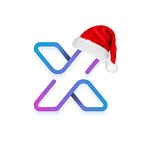ERC721
ERC721 Tokens (Non-Fungible Tokens) Explained
The ERC-721 token standard represents a single unique asset that cannot be interchanged. ERC-721 tokens represent a complete asset, such as a certificate or tokenized good, that cannot be divided. Each ERC-721 token holds its own unique contract values, such as a skillfully programmed piece of art, or ownership and identity details of a tokenized real-world asset such as a house. Though there is complete flexibility in the creation of a token, ERC-721s are solid in terms of immutability, transparency of ownership, and security. In being unique, ERC-721 tokens are commonly referred to as being “non-fungible”, hence they are non-fungible tokens (NFTs).
A standard interface allows wallet/broker/auction applications to work with any NFT on Ethereum. We provide for simple ERC-721 smart contracts as well as contracts that track an arbitrarily large number of NFTs. Additional applications are discussed below.
This standard is inspired by the ERC-20 token standard and builds on two years of experience since EIP-20 was created. EIP-20 is insufficient for tracking NFTs because each asset is distinct (non-fungible) whereas each of a quantity of tokens is identical (fungible).
The ERC-721 (Ethereum Request for Comments 721), proposed by William Entriken, Dieter Shirley, Jacob Evans, Nastassia Sachs in January 2018, is a Non-Fungible Token Standard that implements an API for tokens within Smart Contracts.
It provides functionalities like to transfer tokens from one account to another, to get the current token balance of an account, to get the owner of a specific token and also the total supply of the token available on the network. Besides these it also has some other functionalities like to approve that an amount of token from an account can be moved by a third party account.
If a Smart Contract implements the following methods and events it can be called an ERC-721 Non-Fungible Token Contract and, once deployed, it will be responsible to keep track of the created tokens on Ethereum.
ERC721 tokens, more commonly referred to as Non-Fungible tokens (NFTs) have captured a lot of developer mindshare since the interface was first published as an EIP in September of 2017. Non-Fungible tokens allow developers to tokenize ownership of any arbitrary data, drastically increasing the design space of what can be represented as a token on the Ethereum blockchain.
The biggest differentiator of Non-Fungible tokens is that each one is tied to a different identifier, making each token unique to its owner. This is much different to tokens leveraging the ERC20 token standard, which is a token standard for fungible tokens, meaning each token is interchangeable. In the ERC20 token standard, developers can create any number of tokens within one contract, but in the ERC721 token standard, each token within the contract holds a different value.
ERC721 is a standard interface for Non-Fungible tokens, meaning ERC721 tokens are simply a subset of Ethereum tokens.
Examples
Let’s see how a Standard is so important to make things simple for us to inspect any ERC-721 Token Contract on Ethereum. We just need the Contract Application Binary Interface (ABI) to create an interface to any ERC-721 Token. As you can see below we will use a simplified ABI, to make it a low friction example.
Understanding The Standards of ERC721
Like previous token standards, the ERC721 standard outlines a set of common rules that all tokens can follow on the Ethereum network to produce expected results. ERC721 is important for a number of reasons, particularly because of the new use cases it enables as well as its ability to be easily integrated into ecosystem infrastructure. Having a common interface for exchange and wallet operators to easily implement makes Non-Fungible tokens that much more valuable. Assimilation into the ecosystem makes them more liquid, increases price discovery, and allows anyone in the world to own Non-Fungible assets.
ERC721 Used For Games
Non-Fungible tokens have spawned new types of collectible digital assets as well as new infrastructure for blockchain-based games. Many developers have actually blended the two, and one specific application, CryptoKitties, became an overnight success.
CryptoKitties pioneered the collectibles use case and proved that individuals place value in digitally-scarce goods. Since CryptoKitties leverages the ERC721 token standard and the Ethereum network, owners can be confident that their assets can’t be duplicated or seized. There have been a number of games that built their platforms on top of the ERC721 token standard. Decentraland allows users to purchase scarce, virtual land in the metaverse by tokenizing each parcel of land to a unique token. Non-Fungible tokens have the potential to break out tons of liquidity in gaming assets and create completely unique gamer experiences.
